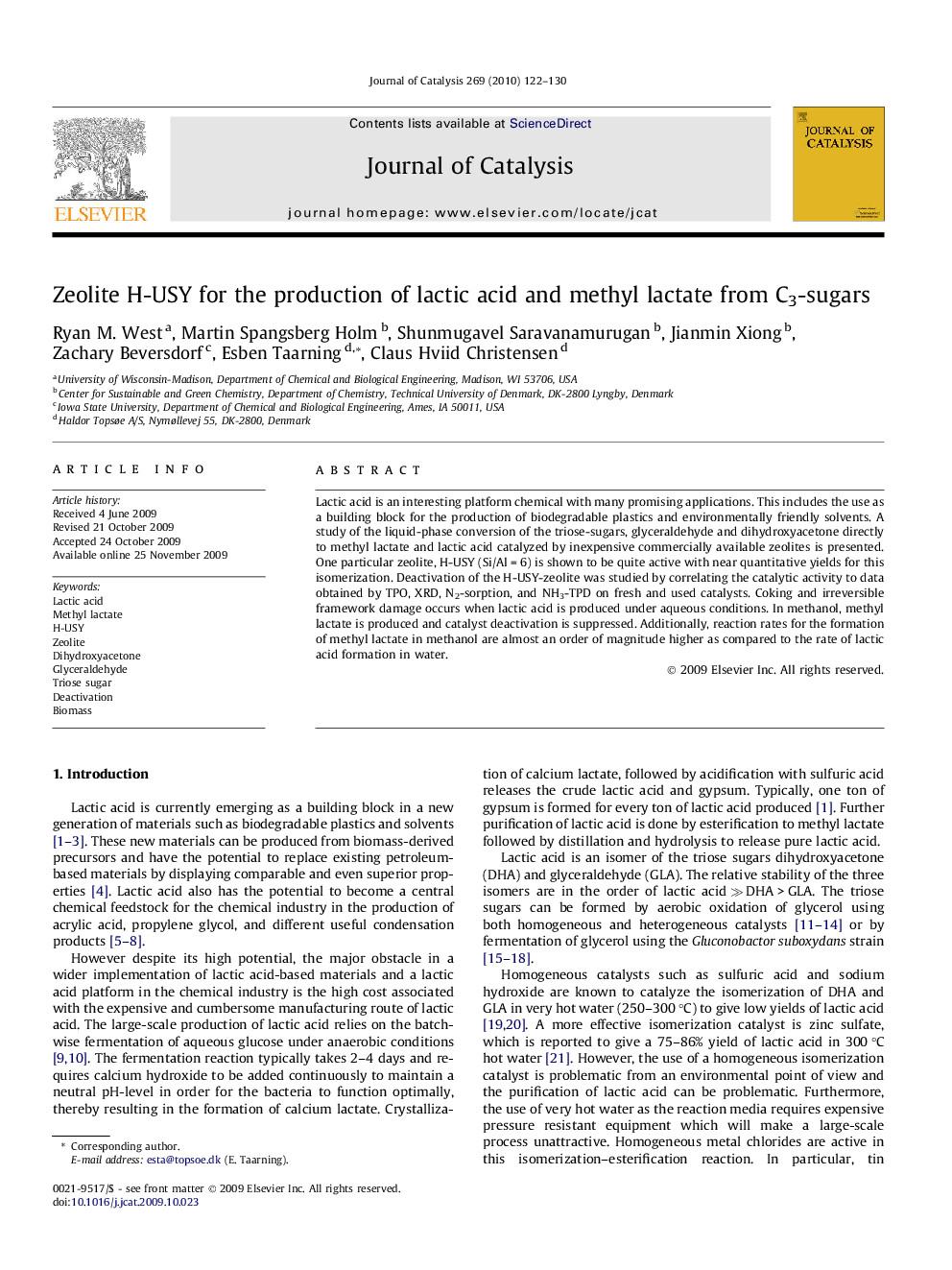| Article ID | Journal | Published Year | Pages | File Type |
|---|---|---|---|---|
| 61997 | Journal of Catalysis | 2010 | 9 Pages |
Lactic acid is an interesting platform chemical with many promising applications. This includes the use as a building block for the production of biodegradable plastics and environmentally friendly solvents. A study of the liquid-phase conversion of the triose-sugars, glyceraldehyde and dihydroxyacetone directly to methyl lactate and lactic acid catalyzed by inexpensive commercially available zeolites is presented. One particular zeolite, H-USY (Si/Al = 6) is shown to be quite active with near quantitative yields for this isomerization. Deactivation of the H-USY-zeolite was studied by correlating the catalytic activity to data obtained by TPO, XRD, N2-sorption, and NH3-TPD on fresh and used catalysts. Coking and irreversible framework damage occurs when lactic acid is produced under aqueous conditions. In methanol, methyl lactate is produced and catalyst deactivation is suppressed. Additionally, reaction rates for the formation of methyl lactate in methanol are almost an order of magnitude higher as compared to the rate of lactic acid formation in water.
Graphical abstractConversion of dihydroxyacetone and glyceraldehyde to methyl lactate can be achieved in close to quantitative yields using commercially available acidic zeolites. The stability and rate of reaction was found to increase significantly by the use of methanol as solvent when compared to water.Figure optionsDownload full-size imageDownload high-quality image (54 K)Download as PowerPoint slide
